摘要
早发型和晚发型阿尔茨海默病的分子遗传学研究 阿尔茨海默病(AD)是老年人中最常见的一种痴呆症,这种复杂的疾病与环境和遗传因素有关。早发性AD (EOAD)和晚发性AD (LOAD,更常见)是AD的主要鉴别类型。人们对EOAD的遗传学有广泛的了解,APP、PSEN1、PSEN2等三个基因变体导致了该疾病。一些常见的等位基因,包括载脂蛋白E,被有效地鉴定与负荷有关,但负荷的遗传学至今还不清楚。据估计,约有5-10%的EOAD患者可以通过EOAD的三个常见基因突变来解释。APOE ε4等位基因增加了携带者患EOAD风险的严重程度,APOE ε4等位基因被认为是EOAD的标志。大量没有基因解释的EOAD患者表明,目前还不可能确定引发疾病的基因。虽然已经在EOAD家族中使用下一代测序技术鉴定了几个基因,包括SORL1、TYROBP和NOTCH3。在EOAD患者中,通过外显子组测序发现了许多TYROBP变异体,这些TYROBP变异体可能增加EOAD的发病机制。ε4等位基因的存在是导致EOAD加重的原因。然而,一些ε4等位基因携带者提出了其他负荷遗传和环境风险因素的存在,目前尚未发现。迫切需要发现AD缺失的遗传学和负荷病因,发现新的潜在的遗传方面,这将有助于理解AD的病理机制。这些研究将有助于开发一种新的治疗候选者,以减轻、逆转和预防AD。本文在现有知识的基础上,综述了EOAD和LOAD的易感基因。接下来,我们将阐述可能阐明AD遗传病因的分子机制,并强调大规模平行测序技术在新基因发现中的作用。
关键词: 阿尔茨海默病,APP
图形摘要
Current Gene Therapy
Title:Molecular Genetics of Early- and Late-Onset Alzheimer’s Disease
Volume: 21 Issue: 1
关键词: 阿尔茨海默病,APP
摘要: Alzheimer’s disease (AD) is the most common form of dementia in the elderly and this complex disorder is associated with environmental as well as genetic factors. Early-onset AD (EOAD) and late-onset AD (LOAD, more common) are major identified types of AD. The genetics of EOAD is extensively understood, with three gene variants such as APP, PSEN1, and PSEN2 leading to the disease. Some common alleles, including APOE, are effectively associated with LOAD identified, but the genetics of LOAD is not clear to date. It has been accounted that about 5-10% of EOAD patients can be explained through mutations in the three familiar genes of EOAD. The APOE ε4 allele augmented the severity of EOAD risk in carriers, and the APOE ε4 allele was considered as a hallmark of EOAD. A great number of EOAD patients, who are not genetically explained, indicate that it is not possible to identify disease-triggering genes yet. Although several genes have been identified by using the technology of next-generation sequencing in EOAD families, including SORL1, TYROBP, and NOTCH3. A number of TYROBP variants are identified through exome sequencing in EOAD patients and these TYROBP variants may increase the pathogenesis of EOAD. The existence of the ε4 allele is responsible for increasing the severity of EOAD. However, several ε4 allele carriers propose the presence of other LOAD genetic as well as environmental risk factors that are not identified yet. It is urgent to find out missing genetics of EOAD and LOAD etiology to discover new potential genetic facets which will assist in understanding the pathological mechanism of AD. These investigations should contribute to developing a new therapeutic candidate for alleviating, reversing and preventing AD. This article, based on current knowledge, represents the overview of the susceptible genes of EOAD, and LOAD. Next, we represent the probable molecular mechanism that might elucidate the genetic etiology of AD and highlight the role of massively parallel sequencing technologies for novel gene discoveries.
Export Options
About this article
Cite this article as:
Molecular Genetics of Early- and Late-Onset Alzheimer’s Disease, Current Gene Therapy 2021; 21 (1) . https://dx.doi.org/10.2174/1566523220666201123112822
| DOI https://dx.doi.org/10.2174/1566523220666201123112822 |
Print ISSN 1566-5232 |
| Publisher Name Bentham Science Publisher |
Online ISSN 1875-5631 |
Call for Papers in Thematic Issues
Programmed Cell Death Genes in Oncology: Pioneering Therapeutic and Diagnostic Frontiers (BMS-CGT-2024-HT-45)
Programmed Cell Death (PCD) is recognized as a pivotal biological mechanism with far-reaching effects in the realm of cancer therapy. This complex process encompasses a variety of cell death modalities, including apoptosis, autophagic cell death, pyroptosis, and ferroptosis, each of which contributes to the intricate landscape of cancer development and ...read more
Related Journals
 53
53
- Author Guidelines
- Graphical Abstracts
- Fabricating and Stating False Information
- Research Misconduct
- Post Publication Discussions and Corrections
- Publishing Ethics and Rectitude
- Increase Visibility of Your Article
- Archiving Policies
- Peer Review Workflow
- Order Your Article Before Print
- Promote Your Article
- Manuscript Transfer Facility
- Editorial Policies
- Allegations from Whistleblowers
- Announcements
Related Articles
-
Stem Cell Transplantation in Pediatric Leukemia and Myelodysplasia: State of the Art and Current Challenges
Current Stem Cell Research & Therapy Genetic Polymorphism of Organic Anion and Cation Transporters: Pharmacokinetic and Pharmacodynamic Consequences in Pharmacotherapy
Current Pharmacogenomics Circulating Biomarkers for the Diagnosis and Prognosis of Heart Failure
Current Medicinal Chemistry Combined Anticancer Therapies: An Overview of the Latest Applications
Anti-Cancer Agents in Medicinal Chemistry Vascular Disease and Risk Factors in Chronic Kidney Disease
Vascular Disease Prevention (Discontinued) Augmentation of Creatine in the Heart
Mini-Reviews in Medicinal Chemistry Genetic Lipodystrophies: Models for Insulin Resistance
Current Medicinal Chemistry - Immunology, Endocrine & Metabolic Agents Atrial Fibrillation in Heart Failure: An Innocent Bystander?
Current Cardiology Reviews Characterizing the Bi-Subunit Type IB DNA Topoisomerase of Leishmania Parasites; a Novel Scenario for Drug Intervention in Trypanosomatids
Current Drug Targets Human Induced Pluripotent Stem Cells for Inherited Cardiovascular Diseases Modeling
Current Stem Cell Research & Therapy Mutations of mtDNA in some Vascular and Metabolic Diseases
Current Pharmaceutical Design Mitochondrial Oxidative Stress and Heart Failure ∼Novel Pathophysiological Insight and Treatment Strategies∼
Current Cardiology Reviews Can the Electrophysiological Action of Rosiglitazone Explain its Cardiac Side Effects?
Current Medicinal Chemistry Role of CD73 in Disease: Promising Prognostic Indicator and Therapeutic Target
Current Medicinal Chemistry Forensic Toxicology and Pharmacogenomics: Hype or Hope For Higher Standards in Forensic Medicine?
Current Pharmacogenomics and Personalized Medicine Aldose Reductase Inhibition: Emerging Drug Target for the Treatment of Cardiovascular Complications
Recent Patents on Cardiovascular Drug Discovery GRK2 Inhibition in Heart Failure: Something Old, Something New
Current Pharmaceutical Design Searching for Phytoinsulins as Cardiovascular Protector in Metabolic Syndrome
Current Pharmaceutical Design Myopericarditis, as the First Sign of Rheumatoid Arthritis Relapse, Evaluated by Cardiac Magnetic Resonance
Inflammation & Allergy - Drug Targets (Discontinued) Maternal Sepsis 2010: Early Recognition and Aggressive Treatment with Early Goal Directed Therapy can Improve Maternal Outcomes
Current Women`s Health Reviews












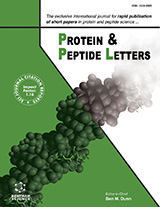
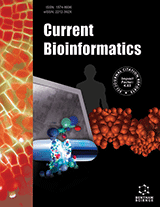
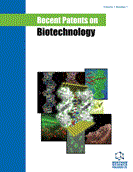
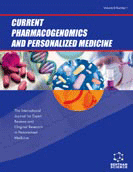
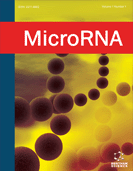
.jpeg)








